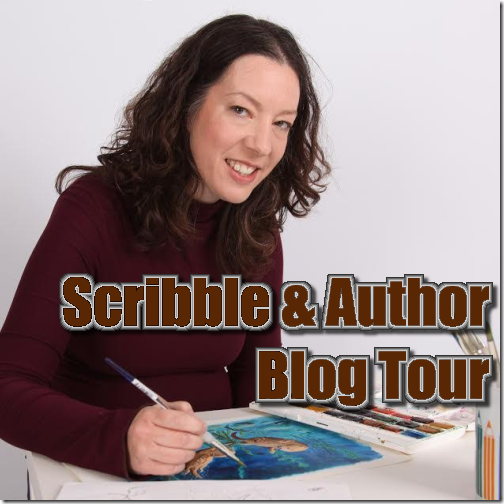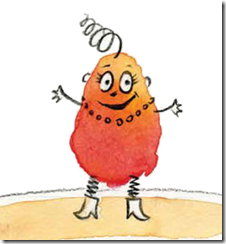
I am so, so thrilled to be hosting today’s stop on the month-long blog tour for my real-life friend and faithful critique group companion Miri Leshem-Pelly… and her new book, Scribble & Author (Kane-Miller Picture Books, 2017)! Check out yesterday’s stop at PUYB Virtual Book Club – as well as tomorrow’s stop, when it’s posted, at Interview at Literarily Speaking. So much fun!!!
As children’s writers all know, though, the book isn’t really about us, the writers. It’s about our CHARACTERS. And that’s why, for today’s blog tour stop, I decided to host an interview not with Miri herself (check out this interview for that, or Miri’s website, if you’re interested!) – but with her character, Scribble!
Why did I want to talk to Scribble? Well, take a look and see for yourself:

Isn’t she adorable??? Just so sweet and full of spunk. Miri is an author/illustrator – so she gets to create her own characters. I’m so jealous. But it’s not enough to CREATE a character – as writers we know that we have to put our character in fascinating situations.
Here's what the book is about, in a sweet little nutshell (from the publisher):
In Scribble & Author, Scribble's journey starts on a peaceful shore called THE BEGINNING, continues to the rough, adventurous MIDDLE, and leads finally to the gate of THE ENDING, but it's not at all what Scribble expected...
Scribble is a scribble and Author is an author, but who really gets to tell the tale?
An innovative picture book about finding your own voice, making your own decisions, and writing your own story.
Most importantly, as Scribble learns in the book, whether we’re illustrating our story or not, we also have to CHALLENGE our characters – even though we love them, we have to put them in plenty of danger and then let them find their own way out.
All of which is to say, it’s not easy being a character in a children’s picture book – especially given that element of danger. So naturally, Scribble had lots and lots to say about her own adventures and being a character in this amazing book.
Let’s listen in:
WKB: Hey, Scribble. It’s great to meet you! How does it feel now that you’re getting all this attention?
Thank you! Finally somebody’s paying attention to me – the main character! You know, the name of the book is Scribble & Author, not Author & Scribble, but for some reason, all other bloggers chose to interview the author instead of me!
WKB: Can you tell me how you first met Author?
When I first opened my eyes I saw Author, right there in front of me. I was very excited to discover that I was inside a book. But let me tell you something - I’m the only one who gets to see Author. Readers don’t see Author. They can read what Author says but they don’t really know who Author is: a man or a woman? Maybe a boy or a girl? I’m the only one who knows. And I’m not telling! It’s my secret.

WKB: Tell us the truth. Does it tickle when you’re being drawn?
You bet it is. I love being










